beckygardener said:...what environmental conditions might possibly cause something like this to happen?
We do not specifically know. Stress of some sort, so perhaps very high temperatures, very low temperatures, or other sorts of stresses. Some specific chemicals may also cause effects like these, although I would not expect any of those chemicals to be in a garden.
We may need to separate what may cause the sectoring to start in comparison to what may cause the sectoring to either continue or to stop.
We should expect to see some sectoring, although it may be rare to extremely rare, in any plant that genetically carries both the ability to make pigments and to not make pigments. But we also may expect some sectoring in plants that make pigments and do not have the ability to not make the pigments. That is because the gene(s) that are involved in making pigments must be switched on at the right times and in the right locations in the daylily. So we see purple pigment in the flower petals but only in the outer most layers of the petal (not in the inner layers). We see yellow pigment in the pollen but not in the leaf, and so on. That means the genes to make the yellow pigment that is seen in pollen are not switched on in the leaf. They do their job in the pollen but not the leaf. The environment of the plant cells make the genes switch on or keeps them off. And influences from outside the plant can affect the environment within the plant cells. So if a gene should have been switched on in the petal to make purple pigment but the outside environment disturbed the cell environment enough to not switch that gene on in some cells (but other cells were able to switch the gene on) then we may see a sector.
Sectors happen, seemingly at random in daylily flowers at any time. I went outside just now and walked my garden. I found two flowers with sectors. I am not a good photographer but I tried taking a photograph of one of them.
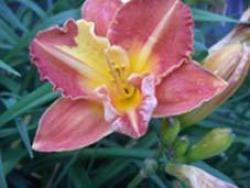
There is a yellow sector visible on one petal. Usually I scan the individual petals of the flowers because there seem to be fewer problems with scans versus photos (at least for me).
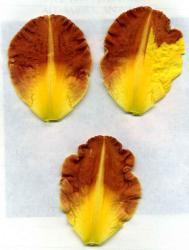
The sectored petal is in the upper right and the petal colours are more correct in the scans than they are in the photo. This plant has never sectored before, as far as I can remember, and may never sector again. The sector may have been caused by some temporary environmental effect or by some temporary genetic effect. As far as I know, no researcher has looked at these sorts of events in any plant species (they presumably all show such sectoring in appropriate conditions).
Sectoring may be caused by some unknown environmental effects or some genetic effects and may be temporary, one-off events or unstable or stable more permanent events.
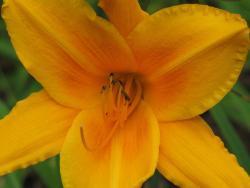
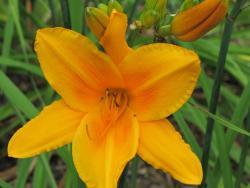

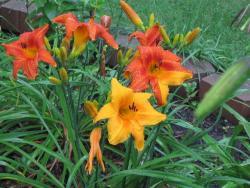
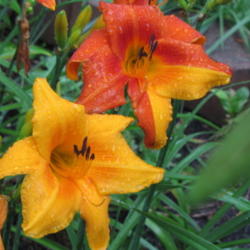
 There is a yellow sector visible on one petal. Usually I scan the individual petals of the flowers because there seem to be fewer problems with scans versus photos (at least for me).
There is a yellow sector visible on one petal. Usually I scan the individual petals of the flowers because there seem to be fewer problems with scans versus photos (at least for me).  The sectored petal is in the upper right and the petal colours are more correct in the scans than they are in the photo. This plant has never sectored before, as far as I can remember, and may never sector again. The sector may have been caused by some temporary environmental effect or by some temporary genetic effect. As far as I know, no researcher has looked at these sorts of events in any plant species (they presumably all show such sectoring in appropriate conditions).
The sectored petal is in the upper right and the petal colours are more correct in the scans than they are in the photo. This plant has never sectored before, as far as I can remember, and may never sector again. The sector may have been caused by some temporary environmental effect or by some temporary genetic effect. As far as I know, no researcher has looked at these sorts of events in any plant species (they presumably all show such sectoring in appropriate conditions).